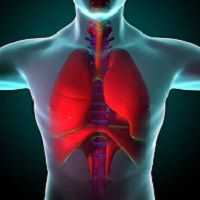Article
Patch Helps COPD Patients Exercise
Author(s):
A transdermal tulobuterol patch may help patients with COPD exercise for longer at a relatively high intensity, Japanese researchers report.

A transdermal tulobuterol patch may help patients with COPD exercise for longer at a relatively high intensity, according to a recent study published in Clinical Research in Pulmonology. Yoshiaki Minakata of the Third Department of Internal Medicine in Wakayama Medical University in Japan, and several colleagues “evaluated the effects of a transdermal beta2-adrenoceptor agonist patch, tulobuterol” on how it affected the physical activity of eight patients with chronic obstructive pulmonary disease (COPD).
COPD limits physical activity, and the level of physical activity is the most accurate predictor of all-cause mortality in patients with the disease. Physical activity is “considered an important target for the management of COPD.” Tulobuterol is a long-acting bronchodilator, and “was designed to maintain the drug level at constant, effective concentrations over a 24-hour period.”
The eight participants in this study were male, and did not have any other diseases that would limit physical activity; they were also not being treated with a beta2-adrenoceptor agonist. They were recruited from Wakayama Medical University Hospital and had been diagnosed with COPD.
The patients each wore an activity tracker throughout the day, except when bathing, for two weeks, and were treated with a 2mg/day transdermal tulobuterol patch, and “performed pulmonary function tests and incremental shuttle walking tests (ISWT) on the last day.”
The treatment improved the duration of physical activity for most of the patients, but “the degree of this improvement was not correlated with the degree of improvement in ISWT or pulmonary function tests.” Still, since physical activity is “the strongest predictor of all-cause mortality” in patients with COPD, improving the duration of physical activity could be beneficial.
This study only had eight participants, which is a limitation; the subjects had not been diagnosed with comorbidities, however the possible existence of subclinical conditions “were not completely excluded.” The researchers suggest future studies with larger cohorts and in which “the influence of comorbidities and muscular weakness” are more clearly stated.




